Page 1 of 1
March 2017 Eriosyce senilis
Posted: Sat Mar 25, 2017 6:02 pm
by Steve Johnson
Or Neoporteria nidus f. senilis if you prefer the old name. Regardless of what you want to call it, this species is a clear winner for March. And how long does it take going from buds to blooms? Let's find out...
First buds were detected by eye toward the beginning of February, and they were just big enough to give us a good shot on the 12th:

The first flower opened on March 13. Sometimes flushes pop all at once, although my E. senilis prefers to do a "slow burn". As in this -- 3/20...
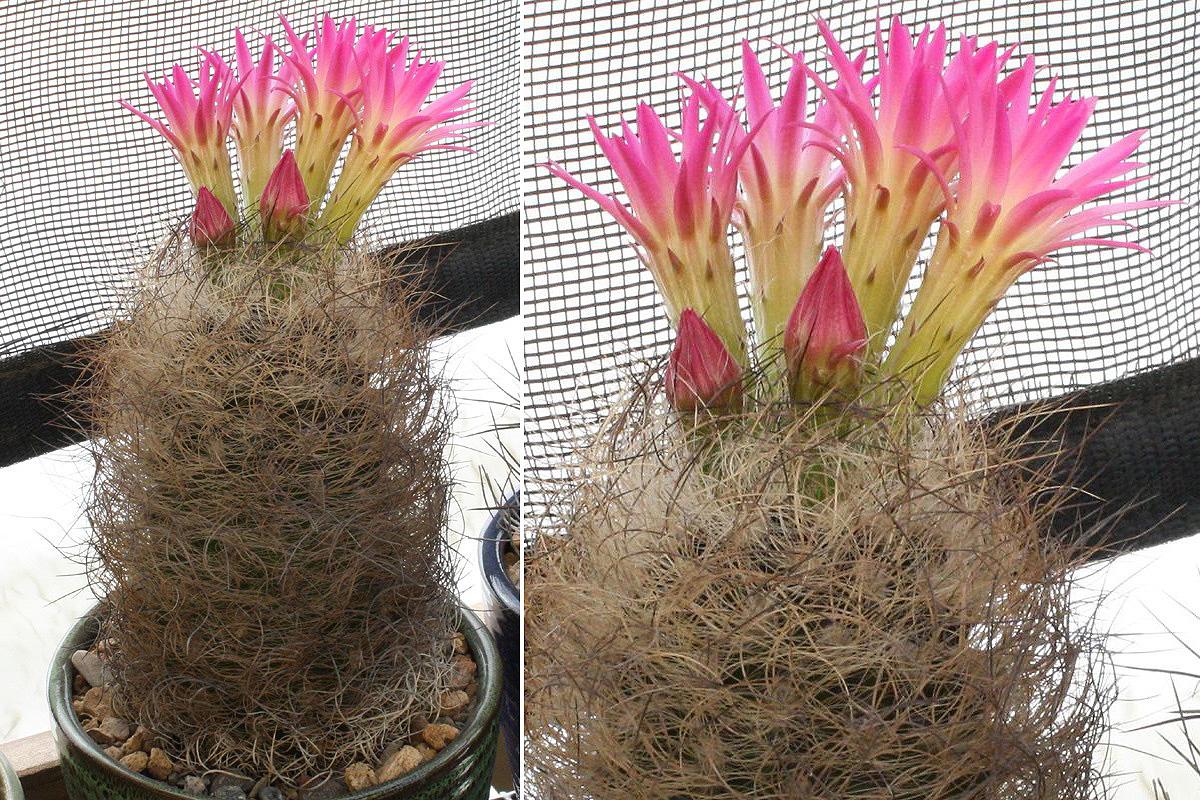
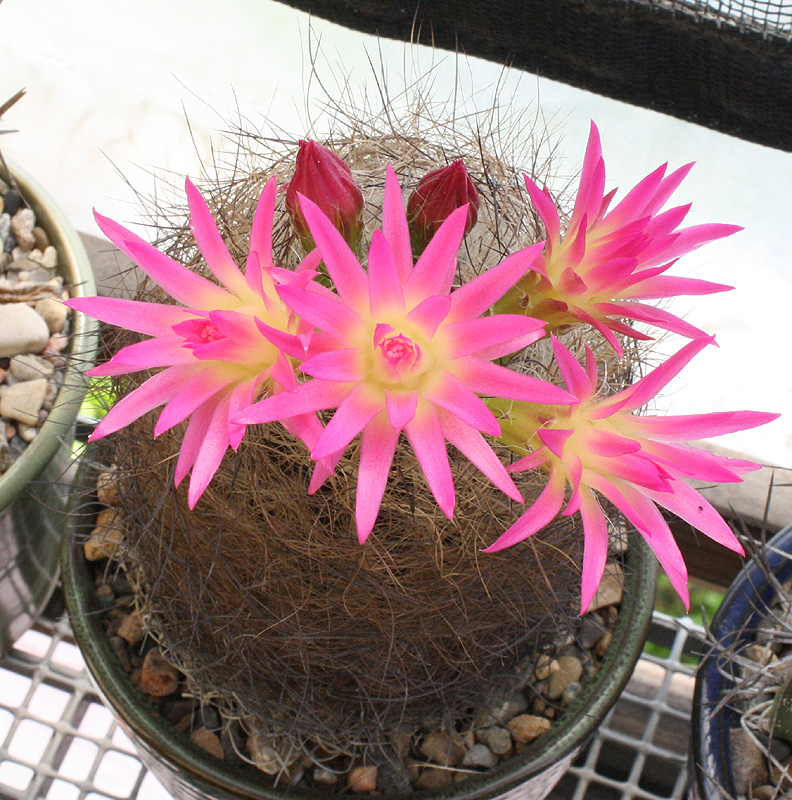
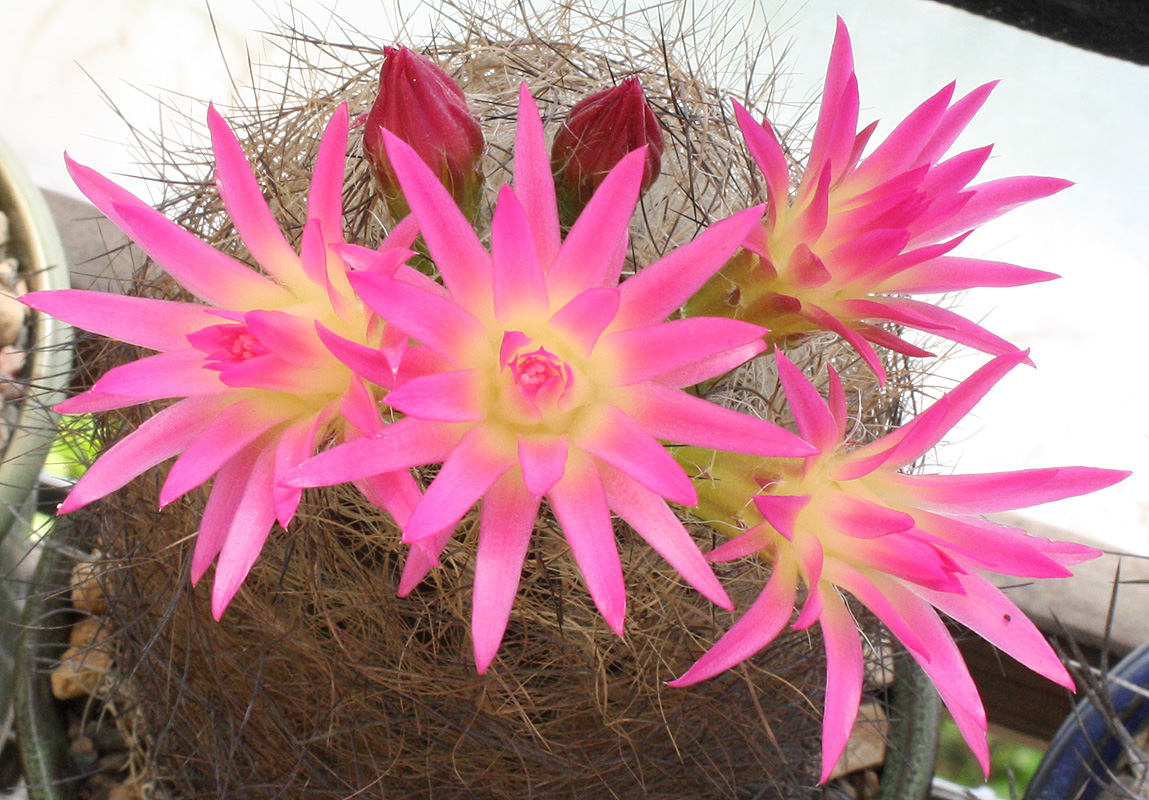
...and the view again 3 days later:

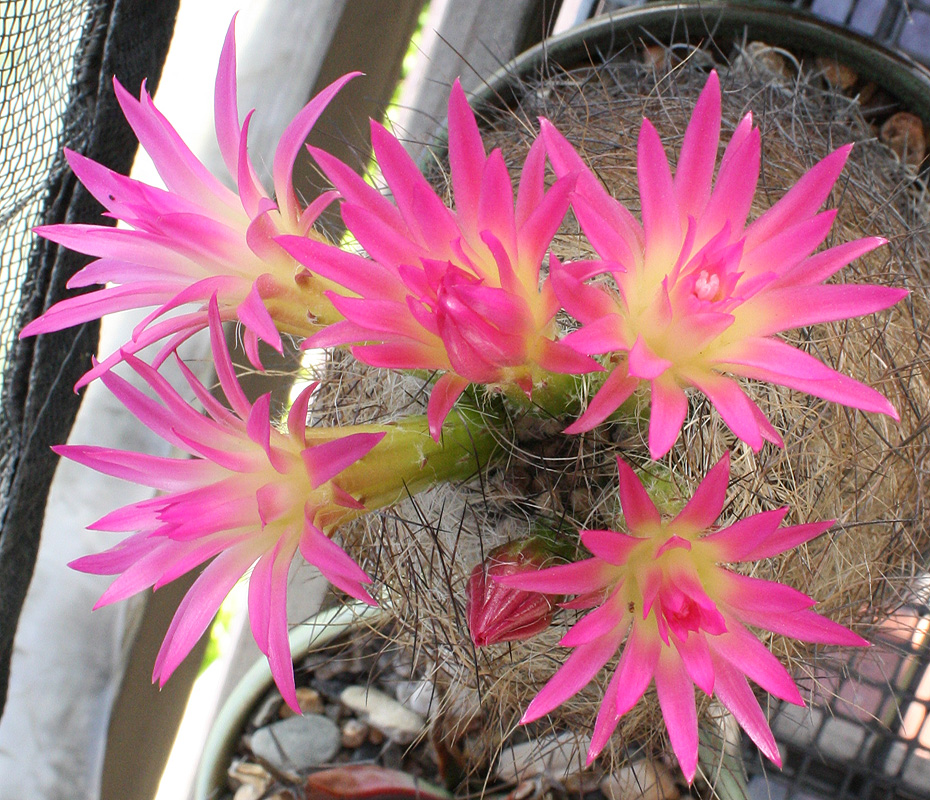
With the plant's lovely form, abundant "bird's nest" spines, and gorgeous flowers, it's no wonder why Eriosyce senilis is so popular among cactus fans.
Re: March 2017 Eriosyce senilis
Posted: Sat Mar 25, 2017 9:58 pm
by sunlover7
Absolutely gorgeous!!
Re: March 2017 Eriosyce senilis
Posted: Mon Mar 27, 2017 9:19 am
by DaveW
Nice pictures Steve,
Unfortunately I did not get to see it in habitat when I went in 2015.
A few old species names are now lumped into synonymy under it, such as multicolor, gerocephala and nidus. Spine colour is variable in some populations, with the name senilis usually used for the pure white form. But over it's range the spination varies from white to blackish, hence Ritter's name multicolor for a variable population. Here are some of Roger Ferryman's pictures of nidus in habitat.

- nidus.jpg (229.04 KiB) Viewed 10012 times
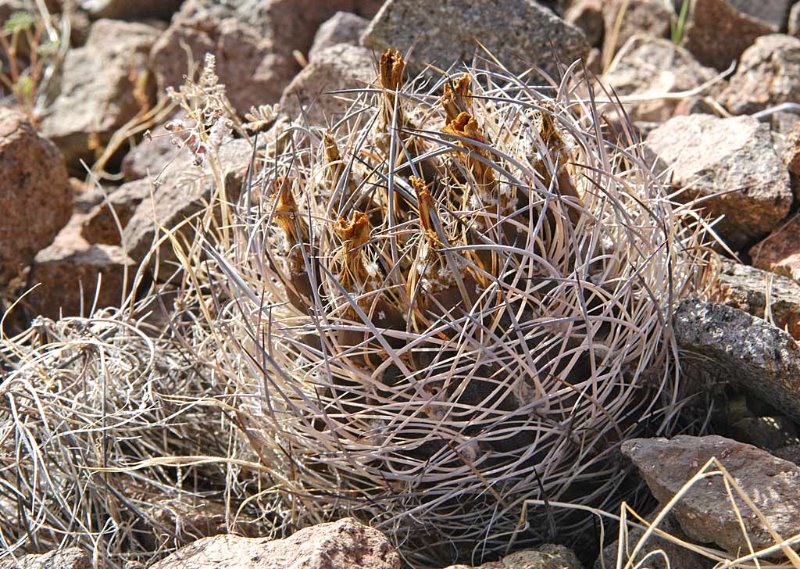
- nidus2.jpg (178.84 KiB) Viewed 10012 times
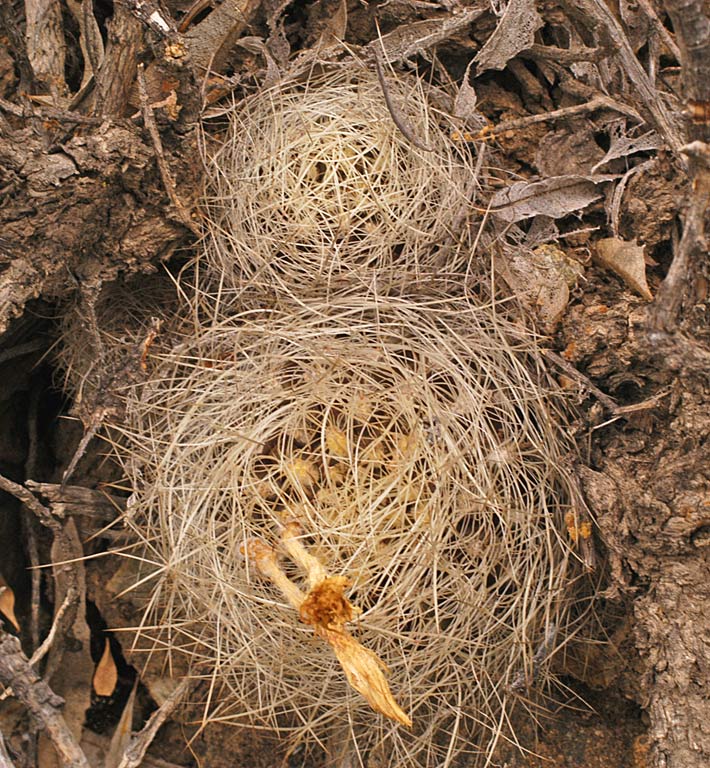
- nidus3.jpg (165.13 KiB) Viewed 10012 times

- nidus4.jpg (161.66 KiB) Viewed 10012 times
As you can see different spine colours can even grow within a foot or so of each other.
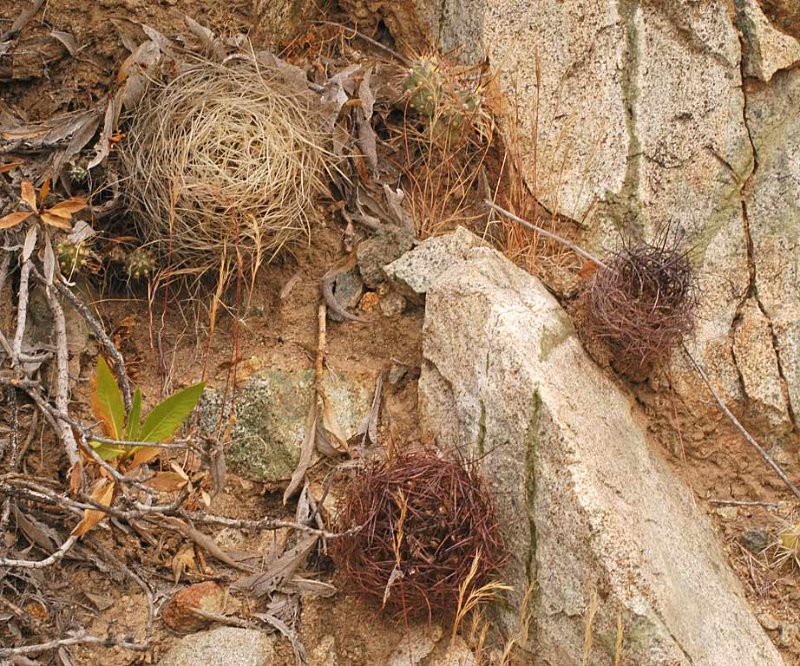
- nidus5.jpg (207.11 KiB) Viewed 10012 times
The name nidus of course means "like a nest".
Re: March 2017 Eriosyce senilis
Posted: Mon Mar 27, 2017 5:31 pm
by Steve Johnson
DaveW wrote:Nice pictures Steve
Thanks, Dave! Actually, I can show you variability right on my plant bench. The E. senilis you see in flower arrived June 2011. A seedling volunteer popped up in the pot the following summer, and here's a photo from September paired up with a shot of the seedling in late-winter growth:

Whether or not the seedling's snowy white spines will stay that way as it gets older has yet to be determined. It'll be interesting to find out what those spines look like a few years from now. In the meantime, here's a "family portrait" of Jr. and Sr. from March 2015:
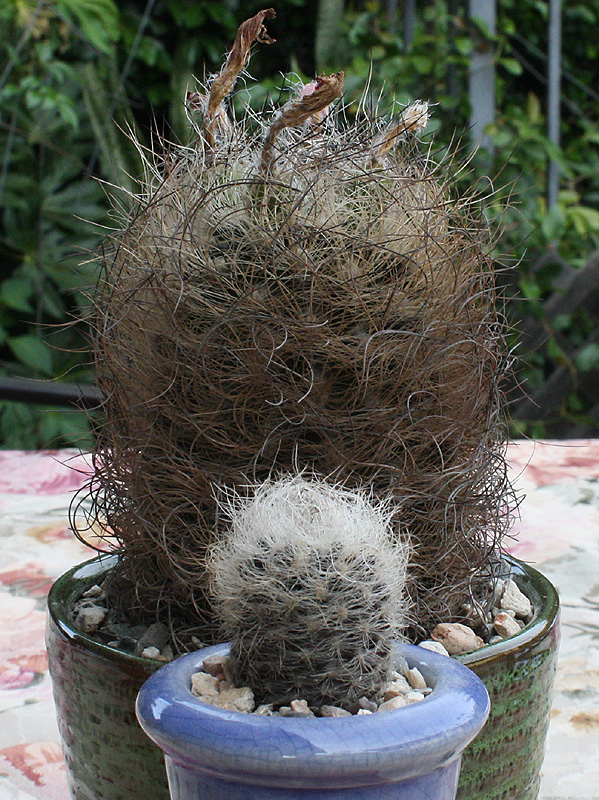
Re: March 2017 Eriosyce senilis
Posted: Mon Mar 27, 2017 7:11 pm
by DaveW
I was told that if you sow the seeds from a single fruit in the mixed habitat population shown you can sometimes get a mix of colours. Whilst some of it could be individual seeds cross pollinated from different coloured plants, some of it could also be recessive genes appearing in later generations.
When Frau Winter started to export Ritter's seed in the 1960's you used to get a few of the darker spined forms, but they don't seem as common these days. Possibly the seeds-men are now breeding from selected clones to get the whitest ones?
Re: March 2017 Eriosyce senilis
Posted: Mon Mar 27, 2017 9:05 pm
by Steve Johnson
DaveW wrote:Possibly the seeds-men are now breeding from selected clones to get the whitest ones?
That may be how I got Jr., although I don't know if it was selective breeding on the part of whoever tended to Sr. before it entered my collection. Also interesting to note that the seed was hiding in Sr.'s pot more than a year before it germinated. How much more I don't know, but what I saw in September 2012 came as a
very pleasant surprise:
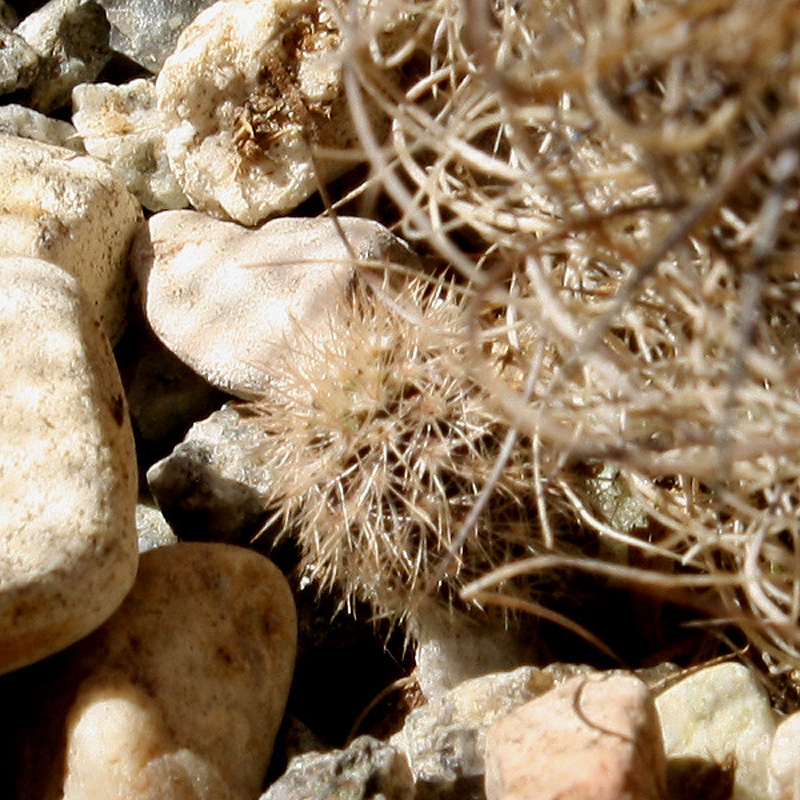
Re: March 2017 Eriosyce senilis
Posted: Sun Apr 02, 2017 1:01 pm
by fallout330
Beautiful flowering! Thanks for sharing














